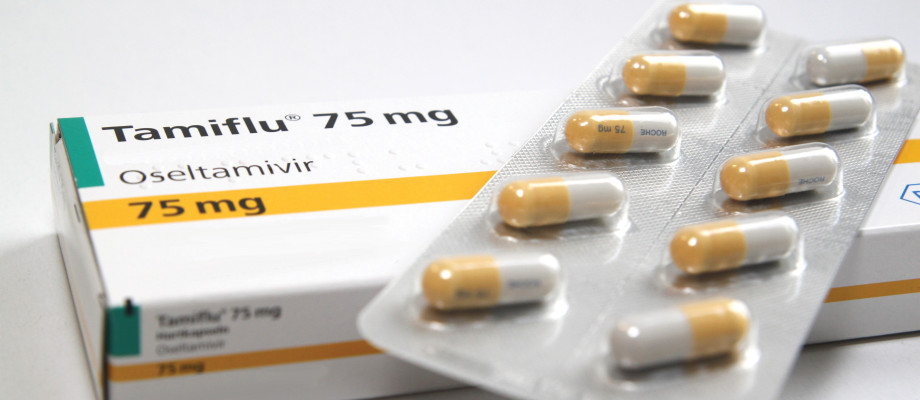
Tamiflu® saved lives during flu pandemic
May 1st, 2014
An international study led by academics at Nottingham, has found that patients hospitalised worldwide with swine flu during the 2009-10 pandemic were more likely to survive if they were treated with Tamiflu® and other similar anti-viral drugs.
The research, published in The Lancet Respiratory Medicine, has shown that among adult patients infected with the H1N1 pandemic virus and subsequently admitted to hospital, a 25% reduction in the likelihood of death was seen if the patient had been treated with one of the anti-flu drugs known as neuraminidase inhibitors (NAIs) compared with no NAI treatment; by far the most commonly used drug was Tamiflu® (known to doctors as Oseltamivir).
The study used data from more than 29,000 patients in 78 centres worldwide hospitalised with H1N1 during the 2009-10 pandemic and analysed the effect of treatment with NAIs on the likelihood of dying from the disease. When data was analysed to look at early NAI treatment (within 48 hours of flu symptom onset) versus none, the risk of death was halved.
The results are the first to come out of the Post-Pandemic Review of Anti-Influenza Drug Effectiveness (PRIDE) study, jointly led by Professor Jonathan Van-Tam and Dr Puja Myles in the University’s Division of Epidemiology and Public Health.
Professor Van-Tam said: “There has been a lot of previous controversy about whether NAIs work in reducing serious complications and deaths due to influenza. Many countries stockpiled NAIs in readiness for a future pandemic. But it’s fair to say that when the 2009 pandemic actually started we did not know if these drugs would reduce deaths — governments around the world had simply made a best estimate that this would probably be so.
“What we have now done is taken worldwide data from the 2009 pandemic, and analysed these to take an impartial view about the return we actually got on the investment made by so many governments. We did our best to assemble and combine all the data we could identify from around the entire globe and to perform the cleanest analysis possible. In my view, these data suggest that NAIs are a likely to be important in the fight against both seasonal and pandemic influenza.”
Interestingly, however, the study showed that the success of Tamiflu® appeared to be largely confined to the treatment of adult patients. The results found no significant reduction in deaths in children hospitalised with swine flu.
Effectiveness of Neuraminidase Inhibitors in Reducing Mortality in Hospitalised Influenza A (H1N1) pdm09 Patients: An individual Participant Data Meta-Analysis, can be read at:
www.thelancet.com/journals/lanres/onlinefirst.
Tags: Anti-Influenza Drug Effectiveness (PRIDE) study, Oseltamivir, Professor Jonathan Van-Tam, Tamiflu®, The Lancet Respiratory Medicine
Leave a Reply
Other Research

Welcome to Associate Pro-Vice-Chancellor for Researcher Academy and Research Culture Development
Professor Jeanette Woolard has been appointed as Associate Pro-Vice-Chancellor for the Researcher Academy and Research Culture Development. […]

Strong research funding performance is a fantastic achievement
Professor Tom Rodden’s research update I am delighted to report that the University of Nottingham is […]

